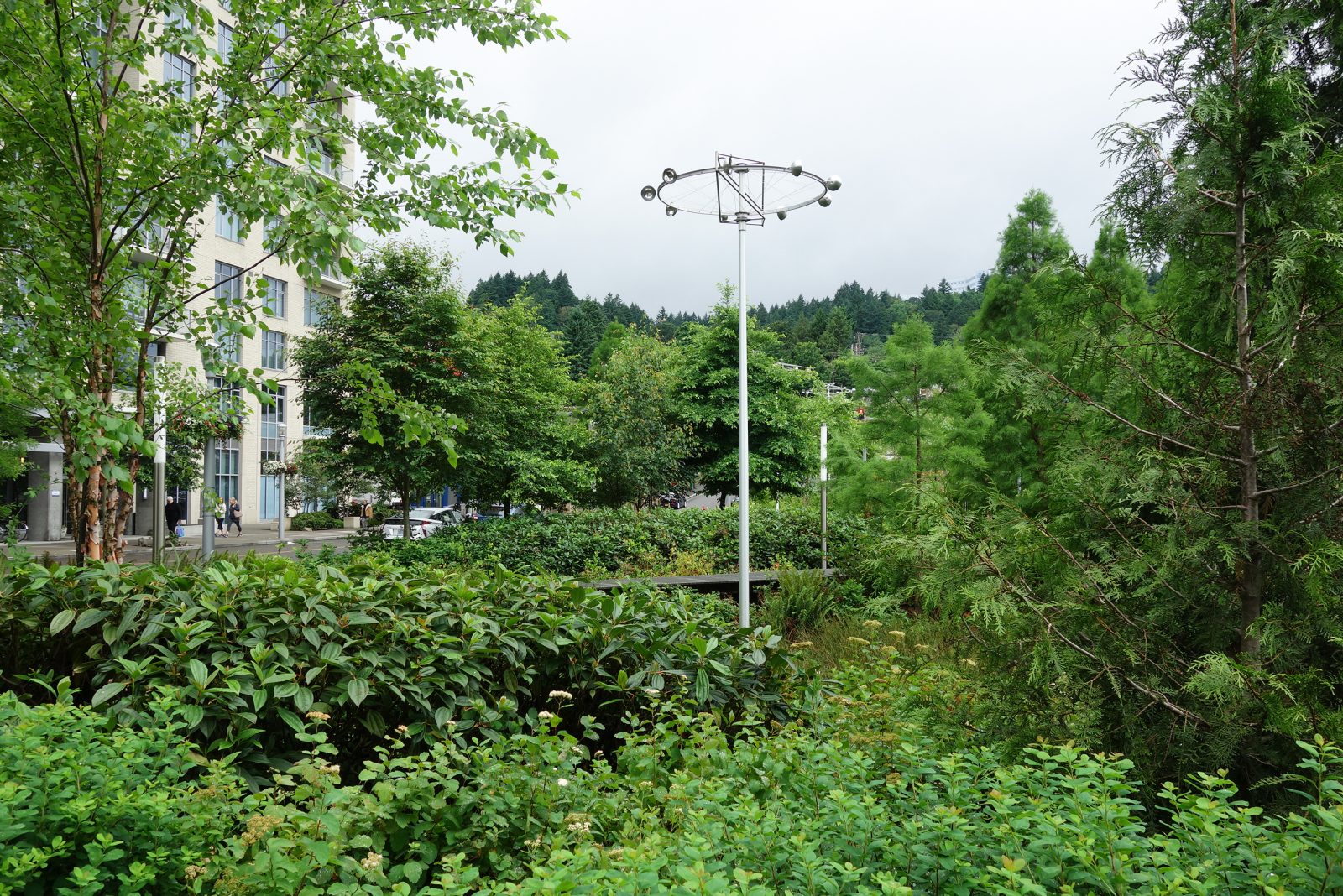WP1
Quantification of carbon storage and fluxes in urban green infrastructure
Better understanding on the role of urban green areas in carbon storage and sequestration
Urban green infrastructure plays a key role in climate change mitigation and adaptation. Vegetation and soil store atmospheric carbon, modify local climate conditions, enhance stormwater cycling, and increase human well-being.

In this work package, we quantify carbon sequestration and storage in a large variety of urban green areas using novel observational techniques. Three key knowledge gaps will be targeted:
1) How the drivers of carbon storage are altered in urban green areas (urban forests, parks, green roofs and gardens) when compared to natural environments,
2) How plant diversity and management practices (e.g. irrigation, mowing) affect soil and vegetation carbon storage, and
3) What are the spatial and temporal scales of the responses?
We utilize existing observations from Helsinki and other cities worldwide as well as new observation sites in Helsinki, Espoo and Hämeenlinna which are established together with our local collaborators.

WP2
Carbon storage and sequestration in diverse urban green infrastructure
Modelling carbon storage and sequestration capabilities of urban green spaces in order to support planning of future urban environment
In WP2, we aim to evaluate carbon sequestration and storage in diverse urban green using process-based models. Measuring the entire city is not possible and, thus, process-based models are applied on chosen locations, representing different conditions. Also, future environment cannot be measured even though it is important to assess, for instance, the implications planning decisions made today might have.

The models are brought into a cyberinfrastructure that enables easy model-data fusion, calibration and uncertainty analysis. Then, the models are tested using the field measurements collected in WP1 and by our international collaborators.
The verified models will be used to estimate, for example, city-scale carbon sequestration and the impacts of various planning activities in the future climate. At later stages of the process, we will pool all efforts into a graphical user interface that will be available for free for example in planning and education.

WP3
Envisioning carbon-smart and just urban green infrastructure
The social acceptability and perceived co-benefits of carbon-smart green infrastructure among urban residents
Understanding how youth and adult residents perceive and value carbon-smart urban green infrastructure is necessary for facilitating the long-term social acceptance of carbon-smartness as a feature of green infrastructure. It is likewise important to ensure that youth and adults are equally included in the decision-making concerning green infrastructure, have equal ability to voice their opinions, and equal access to carbon-smart green infrastructure.
In WP3, we use participatory GIS methods, surveys and workshops to examine the perceptions, values and acceptance of carbon-smart green infrastructure. We also assess how justly the access to carbon-smart green infrastructure and the possibilities to take part in decision-making concerning them are distributed among youth and adults.

WP4
Planning carbon-smart urban green infrastructure from city-level to green spaces
Design guidelines and life cycle assessment for carbon-smart urban green
Planning and implementation solutions of green spaces have long-term implications on the quality and carbon footprint of the entire urban environment. In work package 4, we examine planning of carbon-smart urban green infrastructure from city-level to individual green spaces.
We aim to develop effective means to support carbon-smart urban green infrastructure practices and policies at different levels of planning and municipal decision-making. Through a close collaboration with partner cities of Helsinki and Tampere, we co-create and assess scenarios for carbon-smart practices in the case study areas of Haakoninlahdenpuisto and Hiedanranta.
The work package addresses two main themes: carbon-smart planning and design guidelines, and environmental life cycle impacts of urban green infrastructure. The main outcome of this work package is a proposal for refining the attributional life cycle assessment method. In addition, policy recommendations for municipalities will be produced.

WP5
Construction and management of carbon-smart urban green infrastructure
WP5 collaborates with WP4 to build holistic knowledge of the overall management and implementation – planning, design, construction, and maintenance – of urban green. Urban green consists of both naturally developed and built-up vegetation areas, both of which vary in number by land-use category. In this work package, we focus on exploring urban green as part of carbon-smart landscape construction projects and maintenance practices. WP5 produces updated guidance for landscape construction techniques and material choices. Moreover, WP5 provides a knowledge base for the creation of professional norms to support multi-professional decision-making chains to provide carbon-wise landscape construction and maintenance.

WP6
Consumer carbon handprint
Enhancing understanding on time use, consumption, and carbon handprint of urban gardeners
Urban gardens compose small carbon sinks. Gardening may also decrease the time used for other leisure activities, including long-distance travel and, thus, affect consumer behavior and carbon footprint. Furthermore, gardens can be used for local food production, which can decrease the carbon footprint of food consumption.
In WP6, we examine the carbon handprint and -footprint of urban gardeners and urban farmers from several perspectives. We are targeting three main knowledge gaps: carbon handprints of consumers, climate impacts of local urban food production, and household-level rebound effects for climate actions.
We will also develop an online tool with which anyone can assess their carbon handprints related to carbon smart green infrastructure.

WP7
Interaction and collaboration
Creating impact and bringing scientific knowledge into use
The aim of the WP7 is to enhance collaboration between the research and its partners and stakeholders. Also, the aim is to give support to the variety of interaction activities done within the other WP’s, and to promote the project and it’s results in media and other networks and channels.
All work packages include several activities and aims for interaction: Research will be done in collaboration with local residents and users of urban green, with business partners and professionals, as well as, with partner cities and national organisations. In addition, CO-CARBON has international partners.
Collaborative approach in research strengthens dissemination of the knowledge created in the project and enhances its societal impact. The aim of the research project is to produce new practices and policies which are readily available and easy to adopt into use. One important channel for sharing information, disseminating scientific knowledge and creating impact is the two-week long Carbon-smart urban green -festival during which several events for different audiences will be organised.

